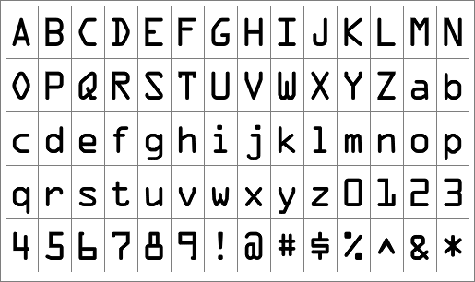OCR-A Optical Character Recognition Font

OCR-A is a font created in 1968, in the early days of computer optical character recognition, when there was a need for a font that could be recognized not only by the computers of that day, but also by humans. OCR-A uses simple, thick strokes to form recognizable characters
In 1968, American Type Founders produced OCR-A, one of the first optical character recognition typefaces to meet the criteria set by the U.S. Bureau of Standards. The design is simple so that it can be easily read by a machine, but it is more difficult for the human eye to read.
Although optical character recognition technology has advanced to the point where such simple fonts are no longer necessary, the OCR-A font has remained in use. Its usage remains widespread in the encoding of cheques around the world. Some lock box companies still insist that the account number and amount owed on a bill return form be printed in OCR-A.
It also is still used to provide a machine readable alpha/numeri code for indention marking methods. Although, lighting and material surface play a large role in the ability to provide reliable results.
The most reliable machine readable part marking method is 2D codes.